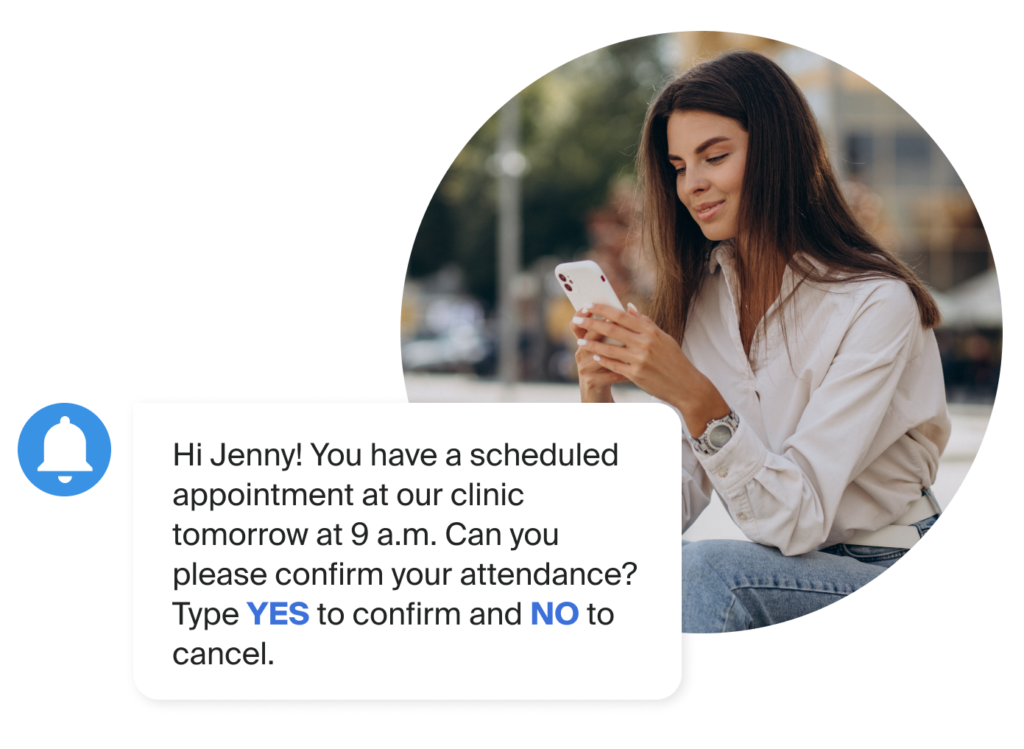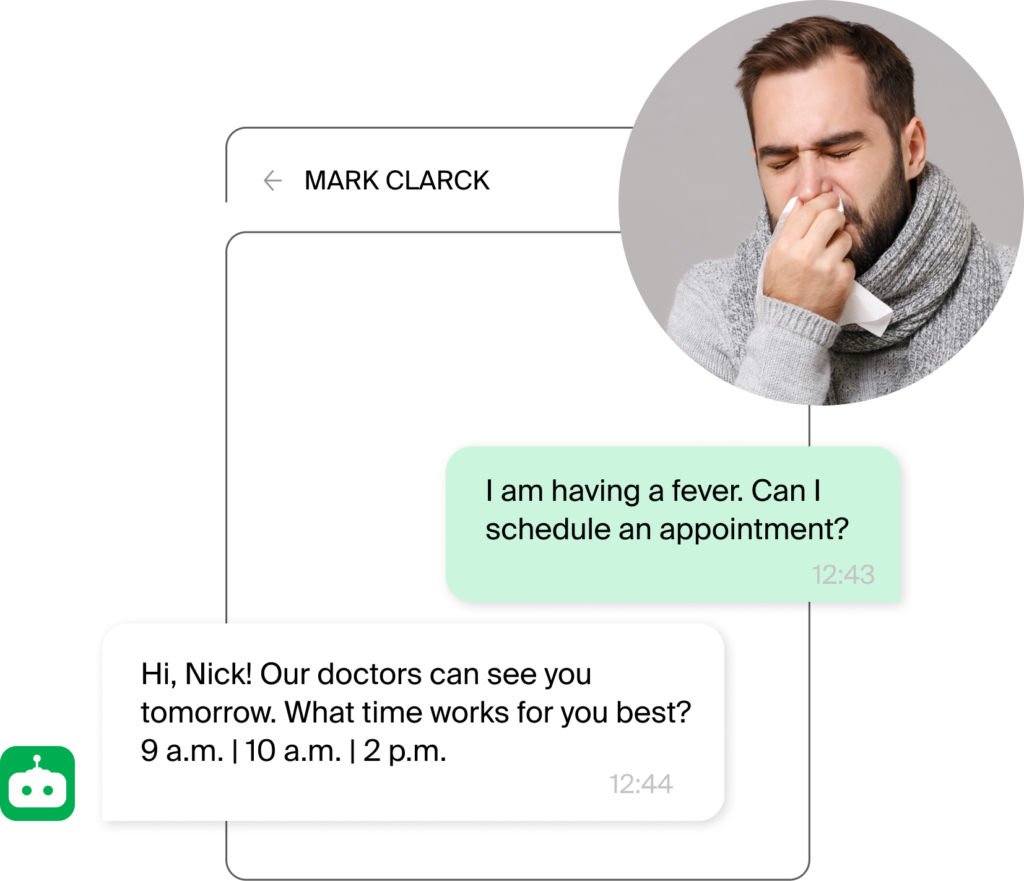Patient care begins the moment a person reaches out to a healthcare provider. The experience they receive from the very first call, chat message or online appointment influences their readiness to trust their well-being to a particular institution.
Patients are increasingly digital-savvy, mobile-centric, and looking for the same kinds of experiences they get when they shop online or book a hotel room. They want healthcare providers to offer simple, responsive, and personalised experiences that are available 24/7. Otherwise, they are likely to look for alternative providers and explore other options to solve their immediate problems. The healthcare providers that go beyond the basics and really shape patient experiences will increase retention and revenue while building trust and delivering better outcomes across the board.

A recent Bain survey reveals that patient expectations for convenience and responsiveness have evolved compared to three years ago. 65% of respondents say they expect a more convenient experience, while 70% expect more responsiveness. The research also shows that customer-centric organisations across different industries outperform their peers, growing twice as fast, as well as generating five times the usual return for stakeholders.
Patient engagement has emerged as a differentiator in the healthcare sector and a growth driver. As healthcare providers undertake digital transformation initiatives, they can’t overlook the experiences they offer customers. This article will cover the importance of patient engagement in the industry and provide suggestions for boosting patient-provider communications in this increasingly digitised sector.
Boosting Patient Engagement with Appointment Reminders
With Statista reporting that 40% of customer interactions are now digital, this should be considered as a preferred model for patient communications as well. Building trust through high-quality communications is crucial for transparency, efficiency, and augmenting patient experiences.
A great way for healthcare providers to boost their patient engagement is to expand their communication capabilities using SMS and Over-The-Top (OTT) messaging. Platforms such as WhatsApp and Viber are used by billions of people, providing reach and immediacy needed for efficient communication. They can use these tools to send timely reminders to clients or alert them to a change in schedule. This helps simplify and accelerate appointment scheduling, reduce admin times and no-shows, as well as increase customer satisfaction. Solutions like this offer a personalised yet non-invasive experience for patients while helping them to keep track of medical appointments.
Automating Symptom Checking and Prescription
On top of SMS and OTT messaging solutions, on-demand customer service tools such as AI chatbots allow your clients to easily access information on their prescriptions and symptoms. AI chatbots have the advantage of the 24/7 care, offering fast responses to common health concerns and helping collect diagnostics to be reviewed by doctors. AI chatbots can be particularly useful for patients with reduced communication abilities or language barriers. Offering support and gauging patient feelings through a menu of choices allows struggling patients the chance to seek advice based on personalised guidance given by the bot.

Increasing Appointment Attendance
Research by the UK NHS shows that 1 in 15 appointments are missed in the UK, with no time to fill the space, and this number is only increasing. No-shows are an issue across all healthcare settings and have a huge impact on service delivery, healthcare cost and resource utilisation. A related survey by Georgia State University revealed that reasons for missing appointments came down to two primary reasons – forgetfulness (17%) and patients being too ill to attend (9%).
The same survey shows that text messages and phone calls are the preferred reminder option. 57% of patients prefer reminders one day before their appointment, and others like a 3-day reminder prior. By considering patient preferences and addressing reasons for missed appointments, practices will reduce no-shows, financial loss, and wasted provider time.
By sending timely reminders via SMS or messaging apps like WhatsApp and Viber, healthcare providers can reduce forgotten appointments and encourage patients to cancel early if they are feeling too unwell. All these communications can be easily managed through a single interface with a reliable CPaaS solution that lets you schedule and track messages to ensure consistent experiences across channels.
Digitising Routine Checkups and Post-operative Treatments
While most treatments and patient recovery processes still require physical checkups, sometimes these processes can be digitised as well. Applications such as mobile health (mHealth) leverage phones or tablets for health monitoring, treatment support, epidemic breakout tracking and chronic disease management, to name a few.
This is one example of how healthcare institutions can provide personalised experiences via digital channels. mHeath is becoming increasingly popular when combined with wearable devices tracking health data without the need to see a healthcare provider. Secure messaging can alert a care team to changes in conditions, such as heart rate or blood pressure, to help inform them of the next steps. This allows healthcare providers to deliver higher-quality care and become more engaged with patients throughout treatment.
Establishing regular push notifications or accurate personalised messaging keeps patients up to date with new information. In a healthcare setting, this data improves both patient and consultant experiences, maximising resources and efficiency.
With more and more consumers expecting personalisation, the healthcare industry must keep up with the demand to maintain engagement and patient retention.

Developing Remote Relationships
Similar to mHealth, telehealth helps to track a patient’s health virtually and report it back to a professional without the need to interact face-to-face. Telehealth is predominantly used for specific and serious health conditions, such as heart monitoring. It can be delivered in a variety of ways, using phone or video calls, sending and receiving secure messages, emails or files and using remote monitoring through an external device.
During the pandemic, advances in this area progressed quickly due to exposure risks when leaving home. Utilising these options help healthcare providers to stay informed on the health and progress of their patients without the need to schedule an appointment. The National Library of Medicine found that within the last year, 37% of adults relied on telehealth. The use of this virtual care option has increased 38 times pre- COVID-19 levels. In the same study, 91% of people claimed that telehealth allowed them to keep up to date with appointments, prescriptions, and post-care treatment or protocols recommended by their doctors. Using CPaaS solutions can maintain a routine and reliable system to ensure delivery of patient engagement and customer satisfaction.
Relying on a secure and trustworthy telemedicine solution can increase engagement of patients who are uncomfortable with in-person appointments, or those who cannot leave the house easily. It also helps build a stronger relationship with patients who would otherwise not seek regular medical advice and maintain patient retention. Using messaging within remote healthcare ensures patients feel considered and informed throughout their journey, whether this is via telephone calls, app messaging, emails or SMS.
Digital communications in healthcare are increasingly defining patient experiences. AI chatbots, SMS, Viber, and WhatsApp offer a transformative potential to healthcare providers, enabling them to enhance patient engagement and ensure closer and more accurate monitoring of patients’ mental and physical health. These digital tools enable more personalised, convenient, and efficient patient-provider communication, ultimately leading to improved outcomes and a more patient-centred experience. These solutions can also help consultants to use their time more efficiently, focusing on higher-concern cases and strengthening patient-provider relationships.
If you are looking to enhance the communication aspects of your patient engagement strategy, get in touch with our expert team today.

